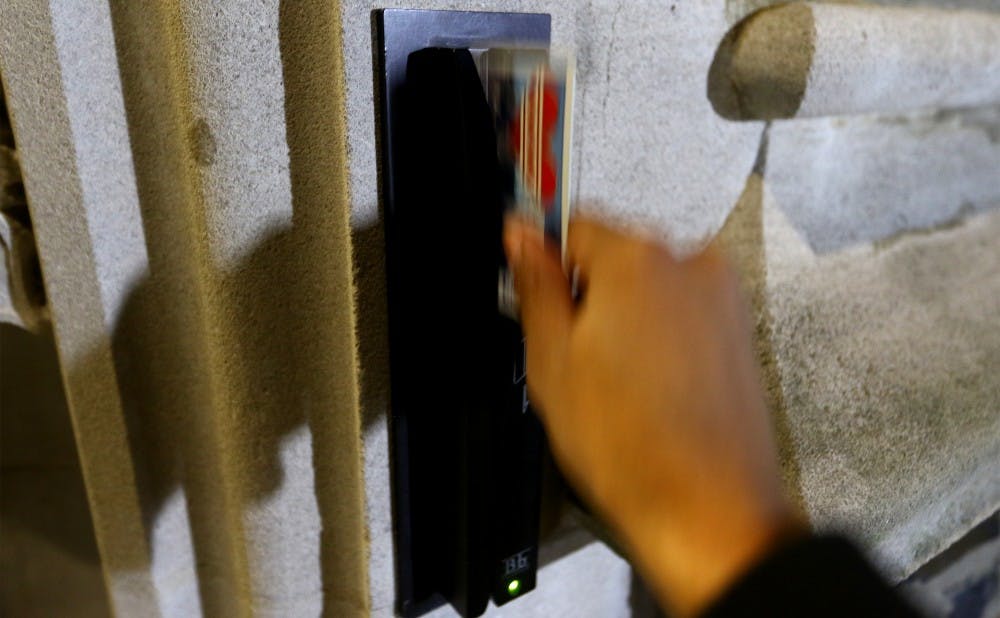Most members of the University community likely have not noticed anything different about their DukeCards this semester, but the technology behind the cards is running on an entirely new system.
The DukeCard system received its first major update in nearly 30 years during winter break, when all of the system's technology was transferred to a new platform. Although most DukeCard holders will not see any changes in their personal card use, the switch to a new platform should yield several advantages behind-the-scenes. The final stages of the transition are currently in the process of being completed.
The major cost of the switch was staff labor, DukeCard administrators said. The transition involved transferring $1.4 million—the collective balance of student, faculty and staff food plans and accounts—from the old platform to the new, along with changing hundreds of ePrint card readers and more than 1,000 door card readers.
The technology behind the old platform, called OPTIM, had reached its "end of life," Laurie Harris, interim DukeCard program manager, wrote in an email Sunday. By recently switching to the new platform—known as Transact—now, the University has better positioned itself to adapt to future advances in card technologies and systems, she said.
One key difference between the OPTIM platform and the Transact platform comes with the connection between the DukeCard's use for door access and for financial transactions. Under the old platform, the two were linked, but now the technology behind the two uses has been distinguished.
"We have better separation of the functions and fewer future dependencies between the systems," Harris wrote.
The project involved DukeCards on all campuses—including the Health System, the Marine Lab in Beaufort and the Kunshan campus overseas. As extensive as the overhaul was for the DukeCard office, however, there was little to no noticeable impact to card users—which is a good thing, said Debbie DeYulia, director of customer and technology support. The bulk of the transition was scheduled for Winter Break so as to cause as few disruptions to card users as possible.
"For the majority of users, there were no changes in the way they use their DukeCard across campus," DeYulia wrote in an email Sunday.
One change that card users may notice is the way in which the DukeCard identifies users by their community affiliation—as student, faculty or staff. Under the new system, it should be easier for card users to manage their sponsored guests, such as spouses, who can receive access to facilities such as recreation centers and libraries.
"One benefit of the DukeCard upgrade project is a new, tighter integration with OIT’s identity management system that enables DukeCard access to the community based on your role as faculty, staff or student," Harris wrote.
The DukeCard system—which was first instituted in 1985—controls access to more than 1,200 doors, including those of academic and administrative buildings, residence halls and athletic facilities.
The DukeCard office provides more than 44,000 new and replacement ID cards per year to students, employees, contractors and others members of the community.
Get The Chronicle straight to your inbox
Signup for our weekly newsletter. Cancel at any time.

